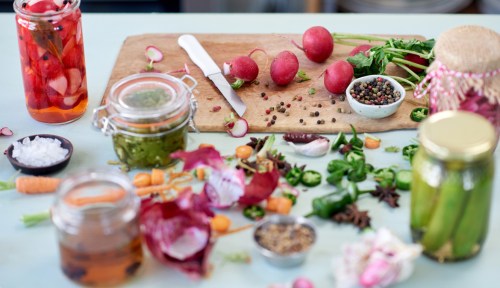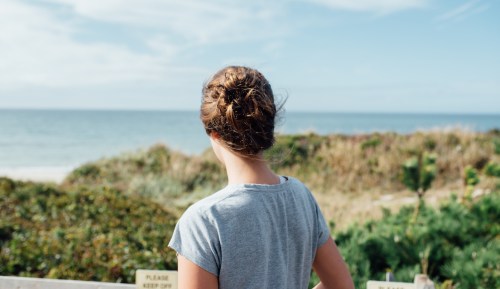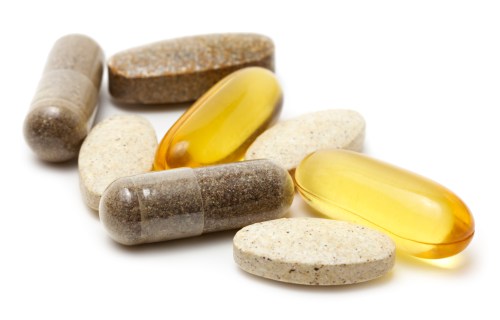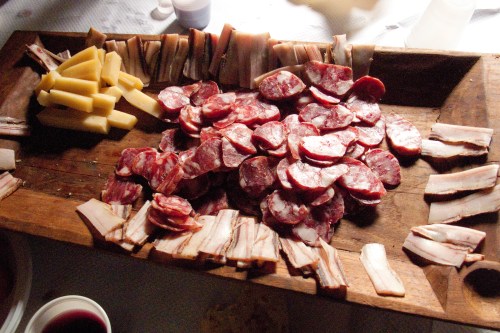Our editors independently select these products. Making a purchase through our links may earn Well+Good a commission
Even if you dutifully separate your paper and your plastics, there’s still more you can do to maintain an eco-friendly home. All those smoothie bowls, avocado toasts, and veggie scrambles, for example? From the banana peels and avocado pits to the kale stems, you’re always left with a ton of food fragments that end up in the trash. And then there are the leftovers. Sometimes you just don’t have the appetite to finish that entire Impossible burger, so into the bin it goes.
It may seem like NBD, but all of this wasted food ends up in landfills eventually—usually wrapped up in not-so-eco-friendly plastic garbage bags. One solution: Composting. The concept is pretty simple. Instead of throwing out fruit and veggie scraps, coffee grounds, and even eggshells, you feed them to the Earth. By adding these materials to soil, you’ll not only help it retain moisture, but also promote bacteria that will help nearby plants flourish.
“Composting recycles food, allowing the nutrients in food scraps to be used again in soil,” explains Dana Gunders, the bonafide food waste expert, scientist, and author of Waste-Free Kitchen Handbook. “It also leads to less greenhouse gas emissions as compared with food rotting in landfills, and helps soil hold water better, leading to less overall water use in farms that use compost.”
That being said, there are some things to know before welcoming a heaping pile of food scraps to your backyard (or kitchen!) So to help get you started, I asked Gunders some of my most pressing composting q’s. And yes, her tips are accessible to everyone—even if your space could qualify for tiny-home status.
Keep reading to dig into the tricks that every composting newbie needs to know.
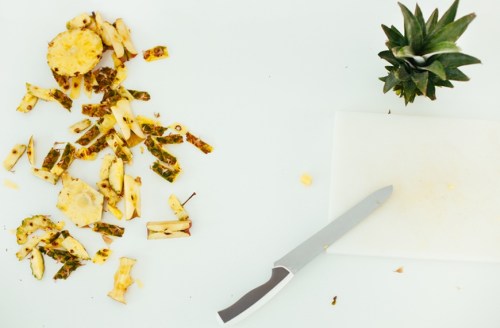
What to trash and what to compost
According to Gunders, the first step on your composting journey should be to take a hard look at the amount of food you’re throwing away, and reduce it wherever you can. “Composting is a great thing to do with food that can’t be eaten, but it doesn’t make it less important to waste less food in the first place, says Gunders. Not only will this make composting more manageable, but food waste is a major problem in general—The New York Times reports that Americans needlessly trash more than $160 billion of food per year. (Check out Save The Food for lots of great tips on reversing this trend.)
Once that’s out of the way, some compost-safe foods include fruit and veggie scraps, coffee grounds, leaves, eggshells, and nutshells. You can even compost tea bags, house plants, and floral bouquets. Meat and fish bones, pet litter, dirty diapers, dairy products, and oils go in the trash. (Letting milk rot outside for days is not a good idea.)
If you’re using your city’s sanitation program or local drop-off centers, the guidelines may be looser depending on where you live. “Typically, municipal compost programs accept meat, bones, paper plates, egg cartons, and even pizza boxes,” says Gunders. So check the regulations and strategize accordingly.
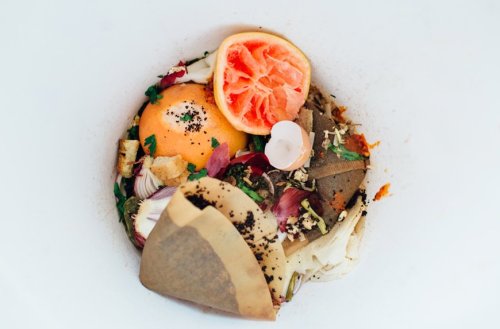
What about the smell?
Think composting is stinky business? Guess again. When done properly, you probably won’t even notice the pile of food scraps building in your tiny apartment. First, get yourself a bin and liner bags specifically designed to trap in odors. You’ll keep this bin in your kitchen, under the sink, or even in the freezer.
Another tip for ensuring an odor-free compost experience: Mix newspaper strips in with your compost, or throw a few on each time you put food in. “You should put roughly two parts brown matter—like leaves or paper—for every one part green, which is most food scraps,” says Gunders. “This is to balance the right amount of carbon and nitrogen so that your compost won’t smell and it will provide the right nutrient balance to your soil.” Oh, and empty your bin often—your nose will generally tell you when it’s time.
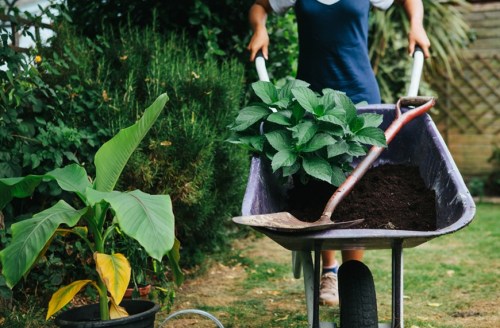
No backyard? No problem.
Contrary to popular belief, you don’t need a 200-square-foot outdoor space with plush grass to dig a compost hole. First, find out if your city has a composting program in place. New York City, for example, began distributing little brown plastic bins for residents to compost, designating specific days for pick-up.If your city isn’t yet on board with the composting trend (yet!) you can sign up for a private service or find a local drop-off location. Then, write a friendly letter to your local government, encouraging them to get with the program.
You also have the option to compost indoors. “It’s not for everyone, but I suggest using a worm bin if you try,” says Gunders. (Yes, this is exactly what it sounds like—a bin full of worms that eat your food scraps. Directions here.) And if creepy-crawlies aren’t your jam, you can always send your compostable items down the drain. “In-sink garbage disposals are a good alternative for many of your food scraps when composting is not an option,” says Gunder. Whatever you choose, you’ll know you’re doing your part to make the planet a little healthier, with almost zero extra effort required. Next up: Switch to a reusable coffee cup, perhaps?
Food waste is especially sad when almond butter is involved. Here’s how to finish every last drop from your jar. Okay, just kidding—all food waste is distressing. This calculator will help you cut back when you’re cooking for a crowd.
Sign Up for Our Daily Newsletter
Get all the latest in wellness, trends, food, fitness, beauty, and more delivered right to your inbox.
Got it, you've been added to our email list.
